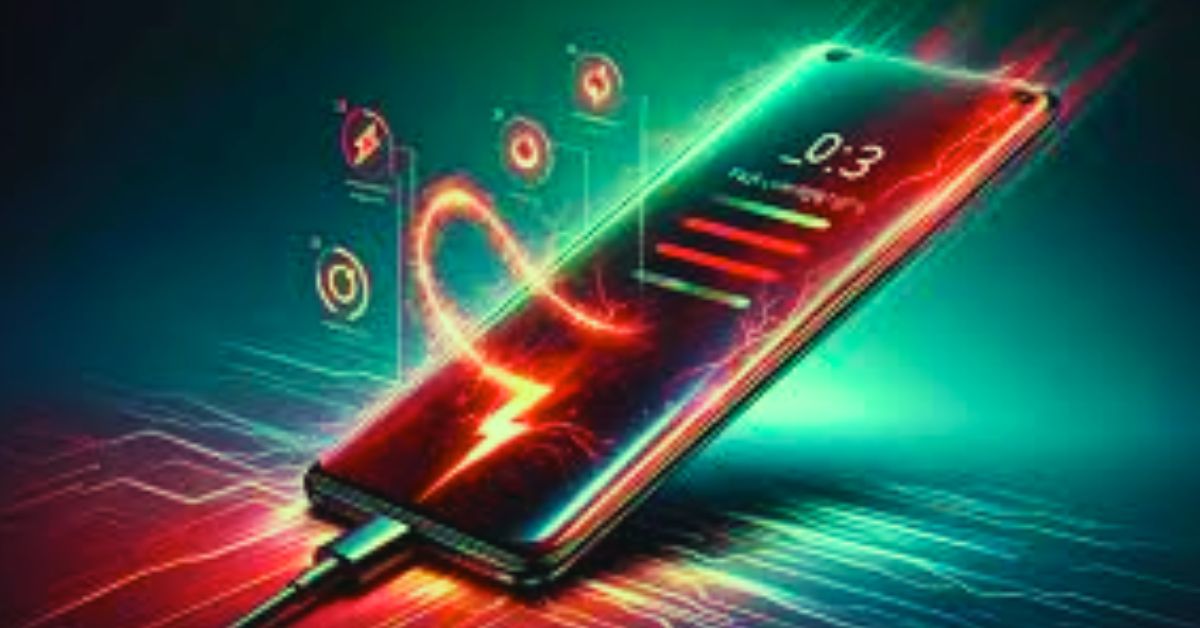As smartphone technology advances, the demand for ultra-fast charging solutions has grown significantly. The days of plugging in a phone overnight are quickly becoming outdated as consumers now expect a nearly instant charge. But how close are we to achieving truly ultra-fast charging for smartphones, and what does the future hold? This article delves into current breakthroughs, challenges, and the exciting prospects of ultra-fast charging technology.
Current State of Smartphone Charging Technology
In recent years, smartphone manufacturers have made impressive strides in charging speeds. Devices that once took hours to charge can now reach 50% or more in just minutes. Brands like Oppo, Xiaomi, and OnePlus have introduced devices with wattages as high as 120W, promising full charges in around 20 minutes. Meanwhile, Apple and Samsung have also made progress, with iPhones and Galaxy devices reaching competitive charging speeds.
However, these advancements are just the beginning. Engineers and researchers are exploring new ways to shorten charging times even further while addressing the safety and efficiency challenges that arise with higher power levels.
Technologies Driving Ultra-Fast Charging
Several innovative technologies and approaches are paving the way for the future of ultra-fast charging:
- Gallium Nitride (GaN) Chargers
Gallium Nitride (GaN) has quickly become a popular material in ultra-fast chargers due to its efficiency and heat resistance. Unlike traditional silicon-based chargers, GaN chargers can operate at higher voltages and generate less heat, allowing for more power in a smaller size. This technology has already entered the consumer market, with many brands offering GaN chargers that are smaller and faster than conventional models. - Graphene Batteries
Graphene, a single layer of carbon atoms, is an incredibly strong and conductive material. Graphene-based batteries could potentially allow for much faster charging while remaining cooler than traditional lithium-ion batteries. Although still in development, graphene battery technology holds immense potential for ultra-fast charging, with prototypes already demonstrating faster charge times and longer battery life. - Dual-Cell Battery Designs
Some manufacturers are experimenting with dual-cell battery configurations that can split the charging load between two cells, effectively doubling the charging speed. By dividing the power input, the battery heats up less and can be charged more efficiently. Several smartphones, especially those from Chinese manufacturers, already use this method to deliver incredibly fast charging times. - AI-Powered Charging Management
Artificial intelligence is starting to play a role in optimizing charging speeds based on user behavior, battery health, and environmental factors. AI-powered charging systems can dynamically adjust the charging rate to prevent overheating and prolong battery lifespan. This approach is particularly useful in situations where charging needs fluctuate or if the device has been heavily used and needs more controlled charging.
Challenges in Achieving Ultra-Fast Charging
While ultra-fast charging offers undeniable convenience, there are several challenges that need to be addressed:
- Heat Management: Higher charging speeds mean more heat. Excessive heat can degrade battery health, reduce efficiency, and in extreme cases, cause safety concerns. Manufacturers are experimenting with advanced cooling solutions, such as liquid cooling and heat-dissipating materials, to counter these effects.
- Battery Longevity: Frequent ultra-fast charging can lead to a reduction in battery capacity over time. This is particularly concerning for consumers who expect their devices to last several years. To address this, researchers are working on materials that withstand high power inputs better than traditional lithium-ion batteries.
- Standardization: With various manufacturers using proprietary charging standards, such as Qualcomm’s Quick Charge, USB-PD, and Apple’s MagSafe, there’s a lack of uniformity in ultra-fast charging solutions. Industry-wide standards would simplify fast charging compatibility, making it easier for consumers to enjoy rapid charging speeds across different devices and brands.
- Power Supply Requirements: Ultra-fast chargers require a stable and high-output power source, which can be a challenge in areas with limited or fluctuating electricity. Efficient energy management systems and safer charging infrastructures are essential to make ultra-fast charging more accessible globally.
What the Future Holds for Ultra-Fast Charging
Despite the current challenges, the future of ultra-fast charging is promising. Innovations in materials science, AI, and battery technology are making ultra-fast charging increasingly viable, and in the coming years, consumers may witness breakthroughs such as:
- 10-Minute Full Charges: Within the next decade, it’s possible that 10-minute full charges could become standard. As graphene-based batteries and other new materials enter mass production, smartphone batteries could achieve full charges in a fraction of the time currently possible.
- Wireless Ultra-Fast Charging: Currently, wireless charging is convenient but much slower than wired methods. However, with advances in magnetic resonance and RF (radio frequency) technologies, ultra-fast wireless charging could soon become a reality, eliminating the need for cables entirely.
- Extended Battery Lifespan: Improved materials and AI-driven charging management systems will likely extend battery longevity, allowing consumers to enjoy ultra-fast charging without sacrificing their device’s lifespan. Battery-as-a-service models may also emerge, where consumers can replace or upgrade batteries rather than purchasing new devices.
- Eco-Friendly Charging Solutions: As ultra-fast charging technology becomes more common, it’s crucial to consider the environmental impact. The development of recyclable and eco-friendly battery materials will be essential in minimizing the carbon footprint of smartphone production and charging infrastructure.
Conclusion
The future of ultra-fast charging for smartphones is bright and full of exciting possibilities. As innovations continue to shape the industry, consumers can look forward to faster, more efficient, and safer charging solutions. However, challenges around battery health, heat management, and standardization remain. By addressing these, manufacturers and researchers will pave the way for a future where charging a smartphone is as quick and seamless as flipping a switch. In the coming years, ultra-fast charging could become a ubiquitous feature, fundamentally changing how we interact with our devices and making power anxiety a thing of the past.
